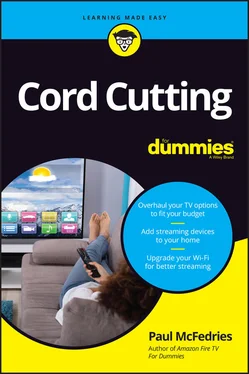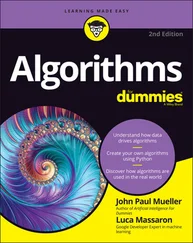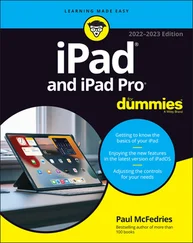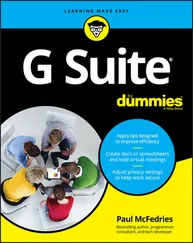I talk in Chapter 7about the Internet connection you need to support a cord-free life. For now, you just need to know that to be able to watch streaming media — particularly streaming video — you must have fast Internet access. How fast? The necessary download speed — measured in Mbps (megabits per second) — depends on the video quality you're streaming.
If your Internet download speed isn't fast enough, your streaming experience will be poor: slow starts, playback pauses and stutters, and overall lousy picture quality.
You might have to wait a long time to watch new shows
When a new cable show (or a new season of an existing cable show) is released, cable providers get first crack at broadcasting it. When you banish the cable company from your life, you also lose the privilege of being first in line to watch this new content.
Sure, there's a decent chance that the new episodes will eventually end up on some other service, such as Netflix. But eventually is the operative word and often means up to a year after the show's release.
You might never see some new shows
Some folks are calling this the Golden Age of television because so much great content is being created. Think of shows like The Handmaid’s Tale, The Queen's Gambit, The Morning Show, and The Marvelous Mrs. Maisel . Besides starting with the word The, each of these shows is original programming created by a streaming service: Hulu, Netflix, Apple TV+, and Amazon Prime Video, respectively. It's great that these services are pouring so much money into creating amazing television, but the downside is that the only way to see each of these shows is to have a subscription to the service that created it.
Is it possible that some of these shows might appear down the road on another service? Maybe, but I wouldn't count on it.
The Benefits of Severing Your Connection to the Cable Company
Given all the reasons listed near the beginning of this chapter as to why the cable company is so awful, clearly the main advantage to cutting the cord is never having to deal with your cable provider again! However, although getting Big Cable out of your life forever is a huge benefit, it's not the only one you get when you snip that cord. Let me take you through a few more.
Carving a sizable chunk off your monthly television-watching bill is the most common reason most people dream about cutting the cord. Sure, earlier I talked about how you might not save as much as you'd like, but how much you save depends on you. If you're happy to just “Netflix and chill” every night, you're going to save a ton of money each month. If you're a sports nut or news junkie, or if your TV tastes run towards premium channels such as HBO, you'll pay extra for the privilege.
Don't get me wrong: Cable subscriptions are so expensive these days that almost everyone ends up paying less each month when they cut the cord.
You'll probably be happier in the long run
Cable TV has what smarty-pants economists call low perceived value, which means you don't feel like you get your money's worth from your cable subscription. That is, although you pay a ton of money each month, you enjoy only a few shows, are indifferent to (or downright dislike) many more, and ignore the majority of what's available. That almost-no-bang-for-your-buck experience is depressing.
By contrast, surveys of cord cutters routinely show great satisfaction, which comes from having a high perceived value of the new lifestyle. To be accurate, the cord cutters who are happiest with making the change are those who've kept things simple by subscribing to only a few streaming services. The combination of saving money, having a simple setup, and being satisfied with what the services offer is the ticket to cord-cutting nirvana.
A big problem with cable TV is the cable itself. Sure, lots of TV comes to your TV via Wi-Fi these days, but many people still have a cable outlet on one wall and a coaxial cable running from that outlet to a set-top box, which then connects to your TV. This setup is fine as long as you're okay with having your TV (and therefore the rest of your entertainment center) relatively close to the cable outlet.
However, what if one day you decide that your TV-watching experience would be much better if you could move your TV to the opposite side of the room? Well, sure, you could do that, but it means buying a really long coaxial cable and stringing it along the base of your walls to the new TV location. That's ugly with a capital “Ugh.”
And if you decide your TV should be on a different floor? Ah, now you're looking at the expense of bringing in a cable technician to move the outlet.
Cutting the cord, by contrast, means literally doing away with that freedom-restricting coaxial cable. With your content now coming in over the Internet and broadcast to your smart TV or your streaming device via Wi-Fi, moving your TV to the perfect location is easy.
 The big assumption behind this benefit is that you're not getting at least part of your TV fix using an over-the-air antenna, which still requires a coaxial cable connection to your TV.
The big assumption behind this benefit is that you're not getting at least part of your TV fix using an over-the-air antenna, which still requires a coaxial cable connection to your TV.
After you go cord-free, that freedom extends where you watch TV. You're no longer required to plop yourself down, potato-like, on the couch in front of your TV set. Instead, because every streaming service and device offers an app not only for configuration but also for viewing content, you can use your favorite tablet or smartphone to watch shows anywhere you want.
In the living room? Of course. In the bedroom or the kitchen? Sure. In the den? Perfect. In the bathroom? Um, your call.
So much of the cable TV experience feels like coercion. The basic or standard package has ten stations you watch regularly, and fifty you didn’t even know existed. A specialty package has one or two channels you want, and eight or nine channels that do nothing for you. You need a set-top box, which the cable company is happy to lease to you forever at ten or twenty bucks a month.
When you throw down your scissors after cutting the cord, that lightness you feel is the lifting of these and similar cable company burdens. Now you are in control, deciding which channels or services and equipment you want. Ah, that's better.
Surveying the Cord-Free Landscape
What can you expect to find in a world where the cable company is a distant memory? Answering that question is what the rest of this book is about. To give you a feel for what's in store, take a quick look at the most prominent features of that landscape.
First, you should know that the cord-free world is broadly divided into two main categories:
Over-the-air (OTA) TV: Live television channels broadcast from a station transmitter. This setup usually requires an antenna, but some streaming services offer live TV channels.
Streaming media: Television programs — as well as movies, music, podcasts, and other media — made available over the Internet. You can use device apps to access streaming media, but most people use a device such as a smart TV, a set-top box, or a streaming player.
In these two categories, you can have one (or, heck, all ) of the following viewing experiences:
Watching OTA TV with an antenna: You want to watch live local stations for free (minus the cost of the antenna, of course). To find out more about this option, see Chapters 3and 4.
Читать дальше

 The big assumption behind this benefit is that you're not getting at least part of your TV fix using an over-the-air antenna, which still requires a coaxial cable connection to your TV.
The big assumption behind this benefit is that you're not getting at least part of your TV fix using an over-the-air antenna, which still requires a coaxial cable connection to your TV.










